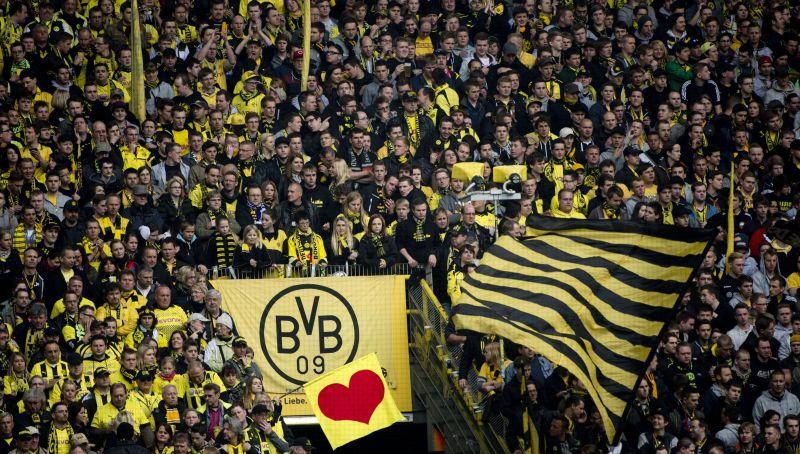AFP/Getty Images

Italy's stadium crisis: Even the Juventus Stadium is obsolete! (Part 1)
This is Part 1 of Antonio Martines' Series on Serie A stadiums.
Today, we talk of the so-called English Model, and how misguided we are in thinking it's the answer in Italy.
Over the last twenty years, almost everyone has jumped on the stadium construction bandwagon... except for Italy, that is. Germany made the most of the 2006 World Cup to give us the best of their kind in terms of size and fan affordability. Austria, Poland and Switzerland all got a clean slate after their respective European championships. France is looking to do the same, whilst league investment saw England kick off a building spree in the nineties, followed by Spain.
The problem in Italy isn’t just that we’re miles behind, but that the so-called "English model" that many of us aspire to – and which many so-called experts keep quoting – is just as obsolete. It’s enough to look at Juventus and Udinese, who are building stadiums of a comparatively small size, of 41.000 and 29.000 fans respectively. While other countries are plumping for bigger stadiums, Italians are being led to believe that a model that was applicable to Thatcher’s Britain is the way forward, a model used to make stadiums as inaccessible as possible to the working classes from which hooligans (supposedly) hailed from.
Quel modello andava alla grande nei primi anni 90, quando bisognava fare “pulizia”, ma le cose sono molto cambiate da allora e gli inglesi hanno ingrandito i loro stadi. Basti prendere l'esempio dell'Old Trafford, passato dai 40.000 del 1992 ai 78.000 di oggi e in procinto di diventare nei prossimi anni un impianto da 95.000. Oppure Anfield, dai 33.000 dei primi anni 90, ai 45.000 di oggi e che entro la fine di questa stagione arriverà a 58.000. Per non parlare di Tottenham, Chelsea, West Ham, Arsenal, Newcastle ecc. tutti club che hanno in mente di ingrandire o hanno già ampliato il proprio stadio.
Whilst we pine after 40k seaters, United has gone from that very size... to Old Trafford’s current 78.000. Liverpool will expand to 58k, whilst most London clubs either have or will, despite a controversial Olympic bidding process.
Germany has done the same: it now boasts the Volksparkstadion (57.000), the Commerzbank Arena (52.000) and the 75.000 seater Allianz Arena, all fresh out the box. From being a provincial stadium, the 30k Westfalenstadion has morphed into the 80.000 Signal Iduna Stadion, which likely boasts Europe’s biggest end... at 29.000 fans.
Same for Marseille, who have revamped the Velodrome, which can now host 67.000 passionate Southerners and looks like a giant seashell from up high.
Spain has always had its crown jewels, the Bernabeu and the Nou Camp. Now, however, the Mestalla, the new San Mames and Atletico’s new ground, La Peineta, are all sizeable too.
In Italy, we haven’t just developed an obsession for small stadiums: we’ve literally keyed grounds that would have been treated like vintage Ferraris elsewhere. Take the San Siro, with the horrific glass wall separating the second ring from the third one that was added in the early 90’s.
What about Rome’s Stadio Olimpico, fresh off the addition two walls that split two of Europe’s most famous curve in two? Napoli owner Aurelio De Laurentiis recently called the San Paolo a ‘toilet’ (though ‘sh*t hole’ may be a more accurate representation), and he may well be right. Long gone are the days when fans packed it to watch Diego Maradona make professionals look like amateurs.
Those clubs who are trying to change something are either stuck in red tape (like Roma), or showed an interest before eventually quelling any talk of a new stadium, like Palermo, Catania, Atalanta and Samp. Milan, for their part, have been unable to develop the Portello area of town, despite much media hype.
From time to time, we hear of projects which border on the delirious, such as knocking down San Siro’s third ring to make a smaller, more intimate stadium. Or a huge pile of rubble, seeing as the eleven towers which keep the third ring up would bring everything else down with them.
Italian football is short of ideas, so clueless as to almost provoke laughter, if it wasn’t for the fact that spectators are making a beeline for the exits, for safety reasons as much as the prices, and the difficulty in obtaining them despite empty stands.

